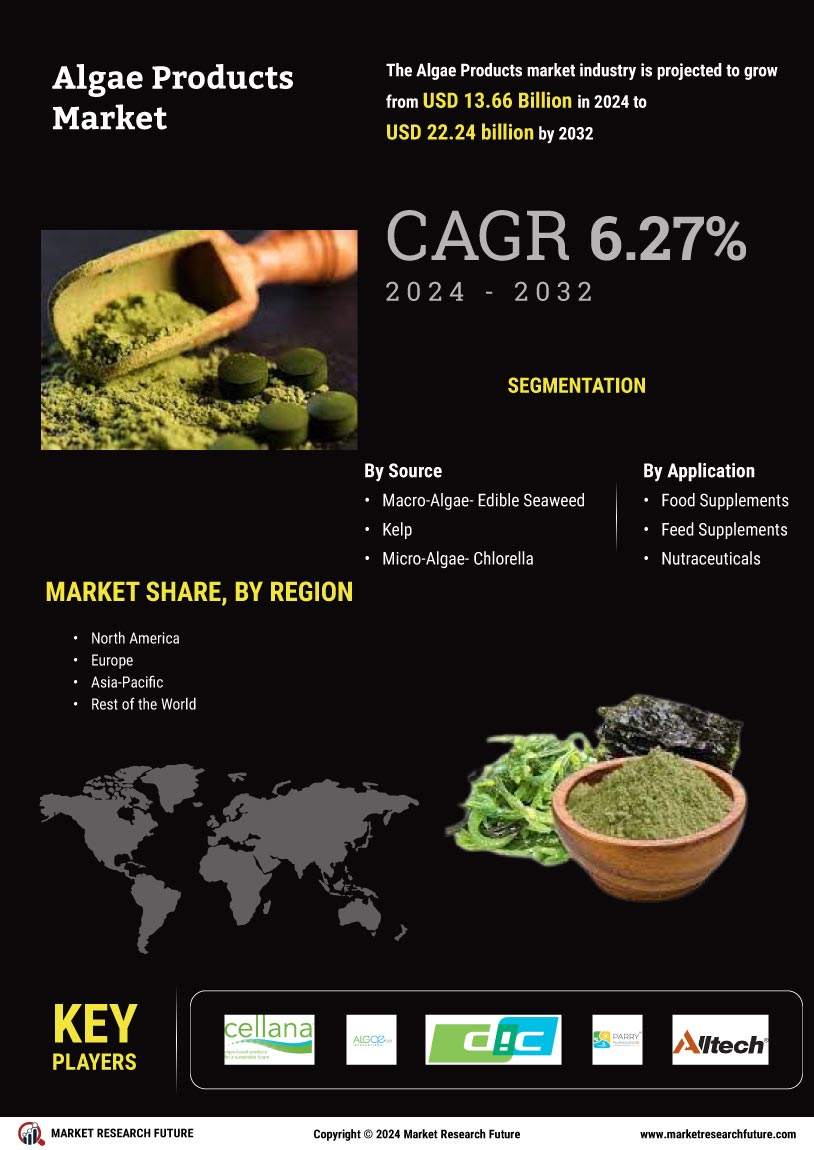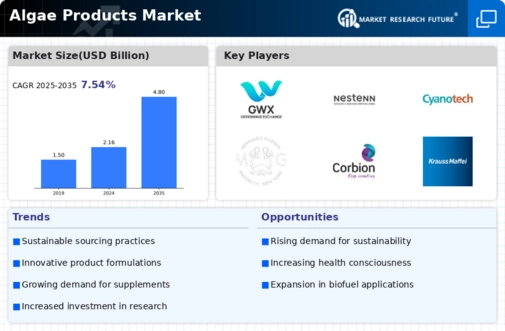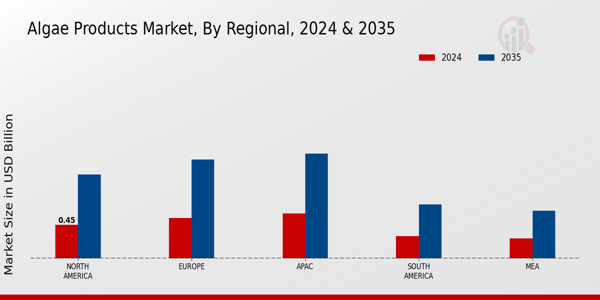The Algae Products Market has been experiencing unprecedented growth driven by increasing consumer awareness of sustainable products, rising demand for health supplements, and a push towards more environmentally friendly food sources. The competitive landscape of this market is characterized by a diverse array of players, including manufacturers, suppliers, and distributors of algae-based products ranging from food additives to biofuels. Various factors influencing competition include innovation in product development, strategic partnerships, geographical expansion, and regulatory compliance.
As companies strive to capture market share, they are focusing on research and development to enhance product quality and efficacy while also exploring avenues for vertical integration to streamline production processes. These dynamics shape the competitive environment, where companies are continually seeking to differentiate themselves and establish a robust presence in this rapidly evolving market.AquaSulgado has carved out a notable position within the Algae Products Market, emphasizing its commitment to high-quality algae-derived products.
The company leverages advanced cultivation techniques and stringent quality control measures, enabling it to deliver products that meet the growing demand for natural and nutritious options. AquaSulgado’s strengths lie in its innovative approach to product formulation and its ability to adapt to consumer trends, bolstered by a well-established distribution network that connects it with various market segments. The company's dedication to sustainability and eco-friendly practices resonating with health-conscious consumers enhances its market presence, asserting its reputation as a leader in specialty algae ingredients.
This focus on quality and sustainability allows AquaSulgado to cater effectively to diverse markets, thus reinforcing its competitive edge.FMC Corporation, with its extensive range of algae-based products, has established a significant foothold in the Algae Products Market. The company excels in the development of innovative solutions, particularly in the areas of natural extractants and functional ingredients derived from algae. FMC Corporation's strengths are amplified through its strong research and development capabilities, which enable the company to maintain a competitive advantage by continually evolving its product portfolio.
In addition, the company's strategic mergers and acquisitions have enhanced its operational efficiencies and expanded its market reach, allowing for a broader distribution of its products across various sectors. FMC Corporation's commitment to sustainability is reflected in its endeavors to promote environmentally responsible practices within its production processes. With a keen focus on meeting the diverse needs of its clientele, the company continues to play a pivotal role in shaping trends and driving growth within the algae products sector.





















Leave a Comment